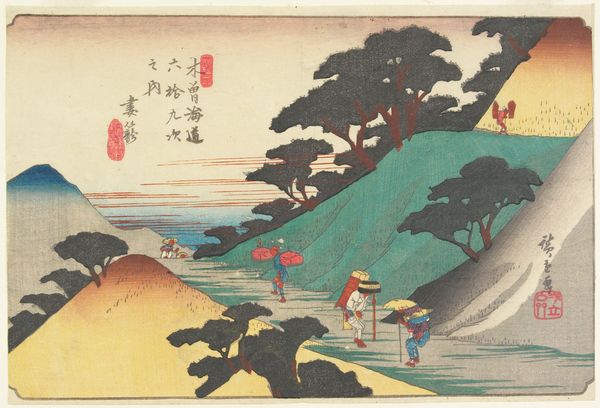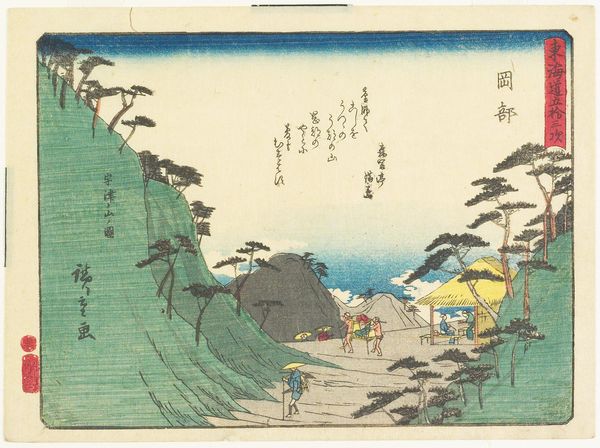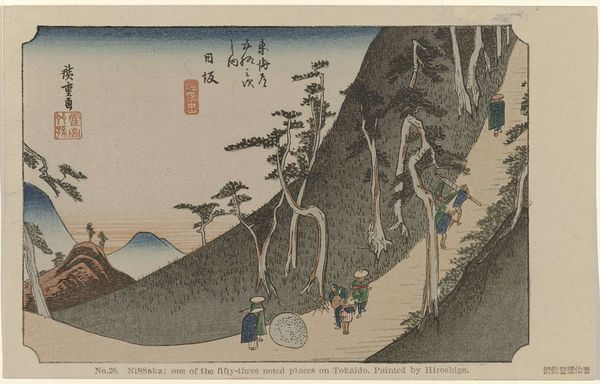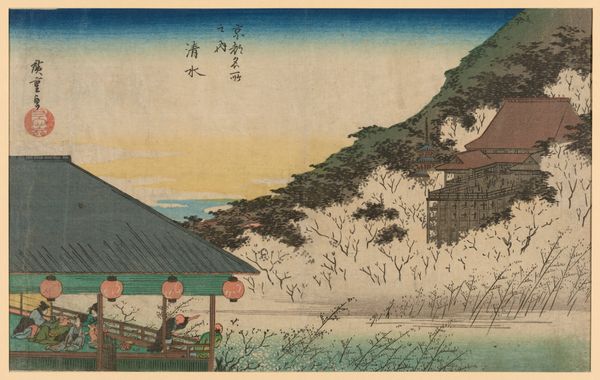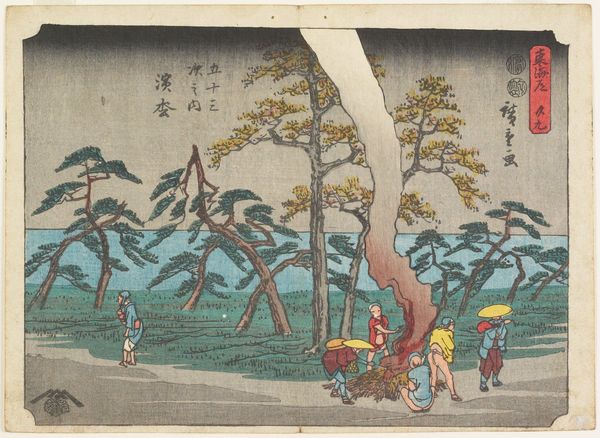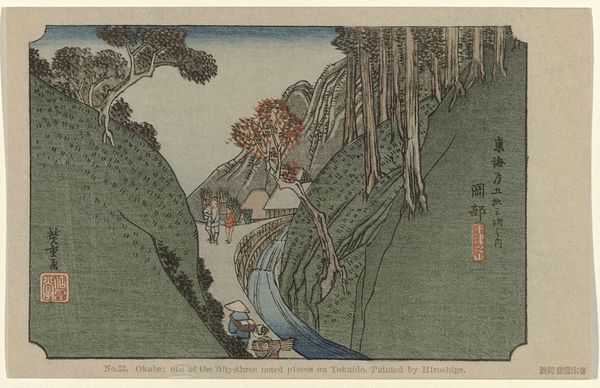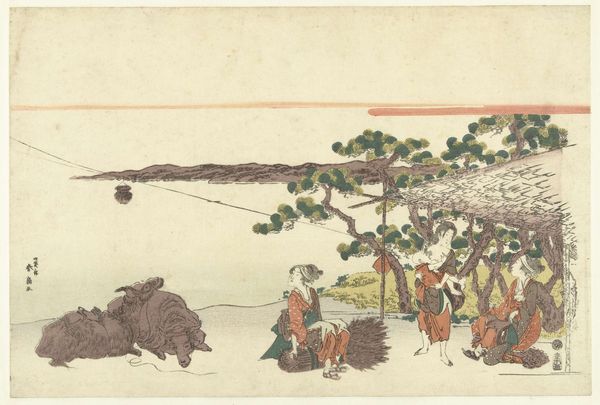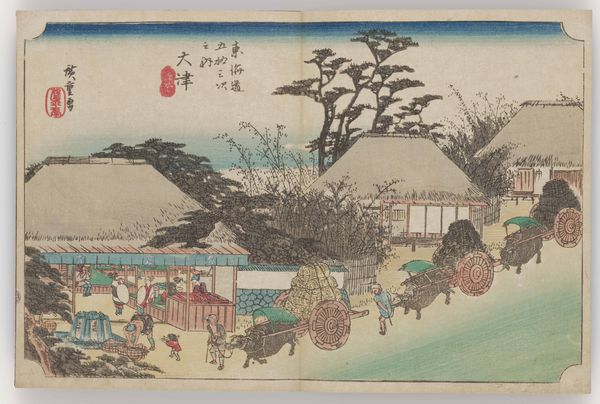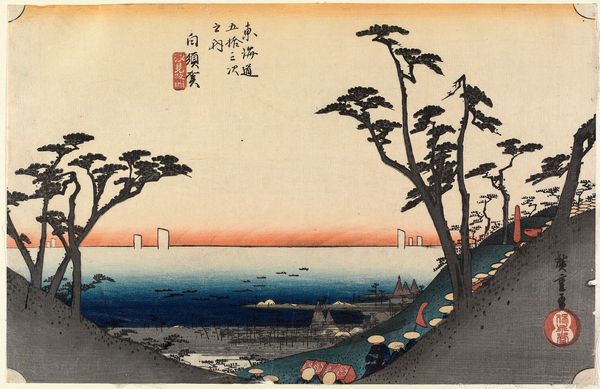
Dimensions: height 216 mm, width 354 mm
Copyright: Rijks Museum: Open Domain
Utagawa Hiroshige created this woodblock print of Yase Village in Japan, sometime in the first half of the 19th century. The artwork invites us to reflect on the relationship between the natural landscape and the daily lives of ordinary people during the Edo period. We see figures going about their labor against the backdrop of rolling hills and distant water. It’s a scene of rural life, likely intended for urban consumers who were increasingly interested in images of the countryside. Hiroshige’s work was shaped by the artistic traditions of ukiyo-e, or “pictures of the floating world,” but also by the social and economic changes of his time. As the Tokugawa shogunate enforced a strict social hierarchy, art became a means of both expressing and escaping the constraints of daily life. Woodblock prints like this one became popular forms of entertainment, especially among the merchant classes, who sought affordable and accessible art. To fully appreciate the meaning of this work, we can consult historical records, literature, and other visual sources that shed light on the social and cultural context in which it was made.
Comments
No comments
Be the first to comment and join the conversation on the ultimate creative platform.
